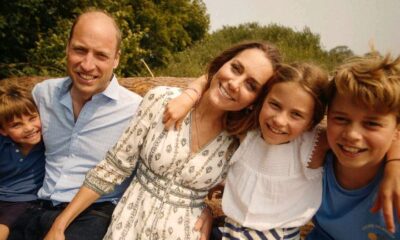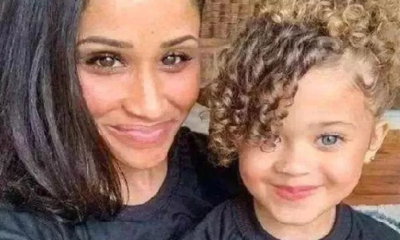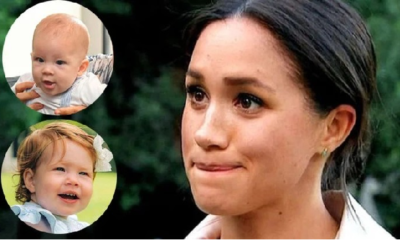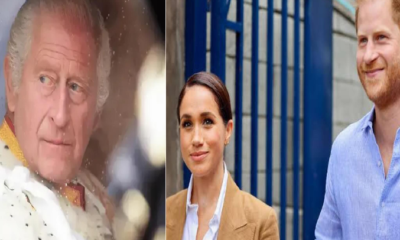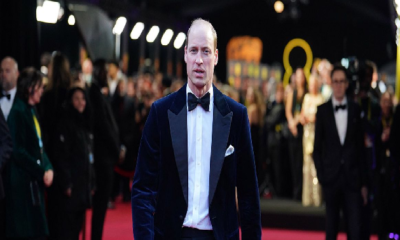NEWS
Breaking News;The Battle for Apache Supremacy: Harry vs William – Who Wins?
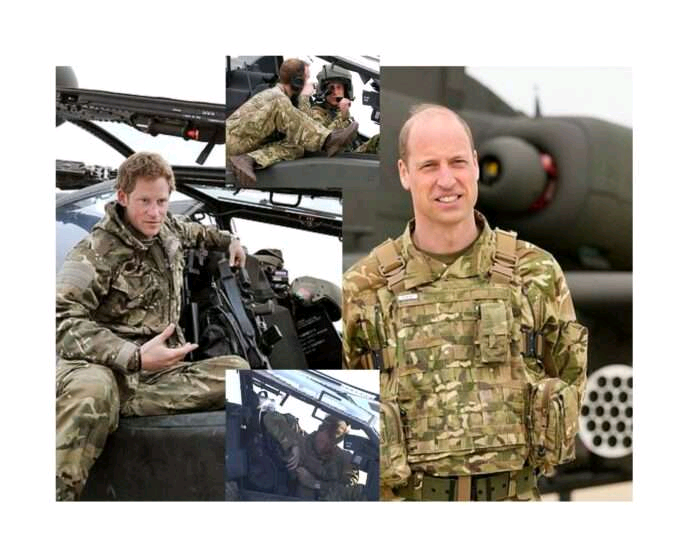
Getting to grips with the Apache helicopter was easy for ‘accomplished pilot’ Prince William – but Prince Harry demonstrated more flair and ‘Top Gun swagger’, experts have said.
The heir to the throne, who is a former RAF search and rescue pilot and flew an air ambulance for two years, took control of the fearsome multi-million pound gunship on Monday, flying it from an Army airfield in Hampshire.
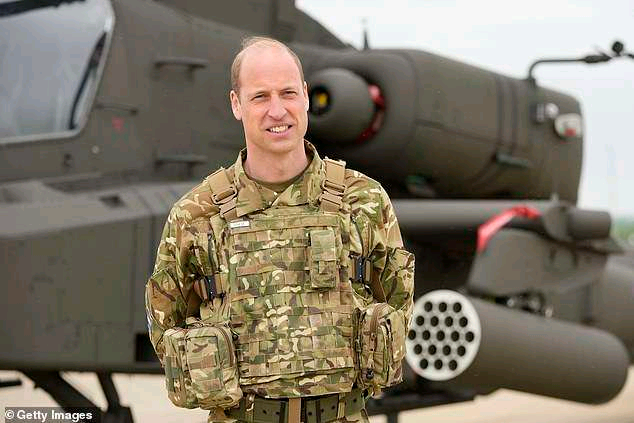
William’s debut came as he was made the Colonel-in-Chief of the Army Air Corps during a rare royal outing with King Charles, where he was welcomed by his younger brother’s former unit – the 662 Squadron.
Defence expert Philip Ingram, a former Colonel in British military intelligence, said getting to grips with the basics of an Apache would be relatively straightforward for ‘accomplished pilot’, William.
But the veteran officer said there was a big difference between simply getting the state-of-the-art gunship off the ground and flying it into combat like Prince Harry did during his time in Afghanistan.
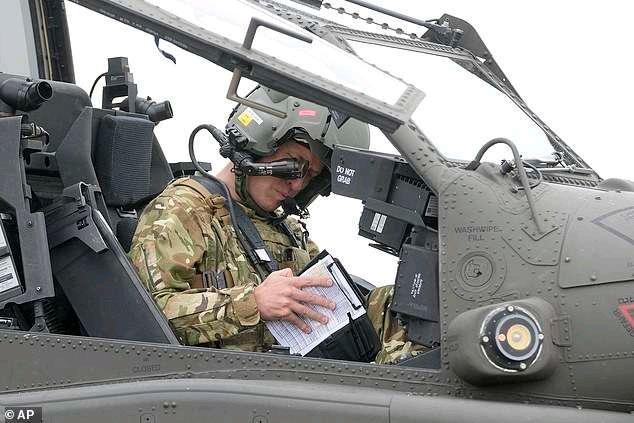
And while William appeared confident behind the stick, a body language expert has claimed his younger brother appeared to have more ‘Top Gun swagger’ when he was in the cockpit.
Col Ingram told MailOnline: ‘There is a difference between flying it and fighting it – I have flown a Harrier Jump Jet where I was in sole control for a good 20 to 25 minutes – it was a two-seater – but the instructor was shadowing my every movement.
William is an accomplished helicopter pilot so taking control and flying wouldn’t be difficult with an instructor’s supervision.’
The images of him taking to the sky in the Apache from the Army Aviation Centre in Middle Wallop on Monday echoed the pictures of the Duke of Sussex’s time with the Army air squadron.
During his time as a pilot, Prince Harry showed ‘swagger’ and ‘excitement’ at being in charge of the fearsome aircraft, while William was more reserved, demonstrating a ‘sense of calm and reassurance’, body language expert Judi James said.
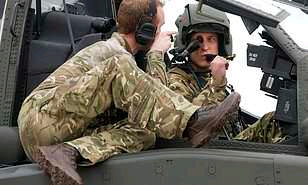
Breaking down the differences in style between the two brothers, Ms James told MailOnline that William’s walk to the helicopter, kitted out in full military fatigues, showed an air of ‘confidence’ by the future heir to the throne.
But as the Prince of Wales posed for pictures, subtle body language cues hinted at a ‘burst of adrenaline’, she claimed – suggesting the William looked ‘cautious’.
While during the Duke of Sussex’s time flying the Apache in Afghanistan, the young prince had a ‘clear desire to appear manly and heroic’, Ms James said.
William’s helicopter work was in air/sea rescue where a sense of calm and reassurance was vital,’ she added.
‘His walk suggests confidence although as he poses for the cameras his lip-licking and rapid blinks hint at a burst of adrenaline.
‘He looks cautious, careful and he is calmly absorbing more instruction (even appearing to have some kind of manual on his lap) as he is about to take off.’
Comparing it to Prince Harry’s demeanor, she continued: ‘Harry’s walk has a little more Top Gun swagger. He looks more active and even excited here as he splays one knee as he inspects the cockpit.
‘Like William he performs a possible ‘tell’ of inner anxiety with a face or beard touch but overall he seems to be enjoying the adventure aspect of it while William seems to be more concerned about getting everything right.’
Harry served as an Apache commander and co-pilot gunner during his 2013 operational tour of Afghanistan.
The Duke started his Army Air Corps pilot training in January 2009, and was awarded the prize for best co-pilot gunner when he qualified in February 2012.
He was later filmed during his time in five-month deployment to Afghanistan, which saw him sharing flying duties and taking control of the weapons of the two-man helicopter.
While Prince William’s skills as a pilot were first honed during his time in the RAF, where he flew search and rescue missions from a base in Anglesey, Wales for three years.
He later worked as an air ambulance pilot with East Anglian Air Ambulance service, completing a two-year stint flying life-saving emergency missions.
Opening up about his tour of duty, the Harry went on to describe his kill count in Afghanistan – which prompted fury from military veterans who accused him of boasting about his combat.
Writing in his memoir, the Duke of Sussex describes the 25 Taliban fighters he gunned down as ‘chess pieces taken off the board’.
‘It wasn’t a statistic that filled me with pride but nor did it make me ashamed,’ he wrote.
‘When I was plunged into the heat and confusion of battle, I didn’t think about those as 25 people. You can’t kill people if you see them as people.
‘In truth, you can’t hurt people if you see them as people. They were chess pieces taken off the board, bad guys eliminated before they kill good guys.
They trained me to ‘other’ them and they trained me well.’
During his time as a search and rescue pilot, Prince William – known as Flight Lieutenant Wales – carried out 156 rescue missions, saving 149 people in the Sea King helicopter.
He later served two years as an air ambulance pilot, flying emergency missions across
He later revealed he faced a ‘cliff fall’ that left him feeling ‘quite lonely’ after he retired from his job as an air ambulance pilot, with the traumatic aspects of the roll taking a toll on his mental health.
The Prince of Wales said he ‘misses’ his time in the job which he held from 2015 to 2017, adding that he felt ‘isolated’ after taking a step back.
The candid chat about the lasting impact the emergency service role took on the royal came as he spoke with emergency responders during a visit to the Blue Light Hub in Milton Keynes last year.
William spoke about having to ‘armour up’ while working for East Anglian Air Ambulances as he expressed concerns about managing the long-term mental health of front-line emergency responders.
He said: ‘I was holding everything and doing it all. There were a few times I had an armour up. I took it home with me and it went from there.’
The Prince added that he did not appreciate the ‘cliff fall’ of stepping down until it actually happened.
‘Life catches up with you’ after you have left, he said. ‘That can feel quite lonely and isolating.
‘At the time I didn’t notice it happen. Afterwards, you realise it’s not normal. I do worry about people retiring. We have to be better at managing long-term health.’
The previous helicopters he has flown were vastly different to the heavily-armed Apache.
Boasting a Rolls Royce engine, the attack helicopters have a top speed of 186mph and can detect 256 potential targets at once up to 10 miles away and prioritise threats in seconds.
It carries a mix of weapons including a 30mm chain gun, 70mm rockets and Hellfire missiles to provide choice for the commander and flexibility during the mission.
They were built by Boeing and feature new rotor blades and drivetrain to improve flying performance as well as improved sights, sensors and communications systems to share data with other helicopters.
The latest variant of the aircraft, the Apache AH-64E, is designed to find and destroy air defence units, tanks and armoured vehicles.
However, it is also capable of a wide range of battlefield tasks that include intelligence, surveillance, target acquisition and reconnaissance, as well as force protection and command and control.
With its hi-tech sensors and sophisticated kit, the helicopters can operate in all weathers, day or night.

